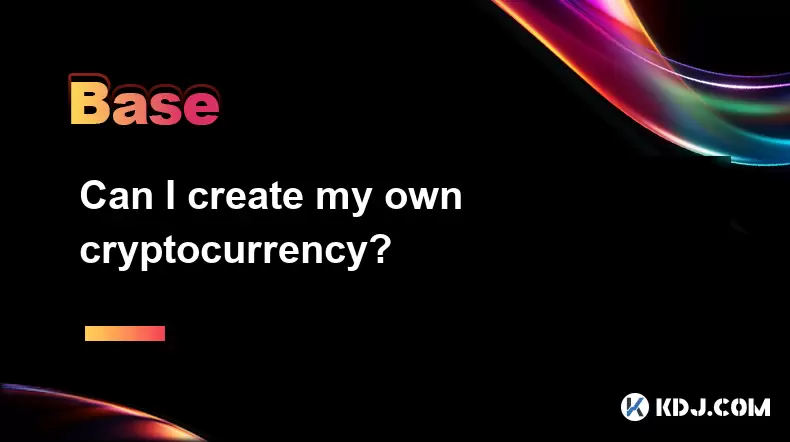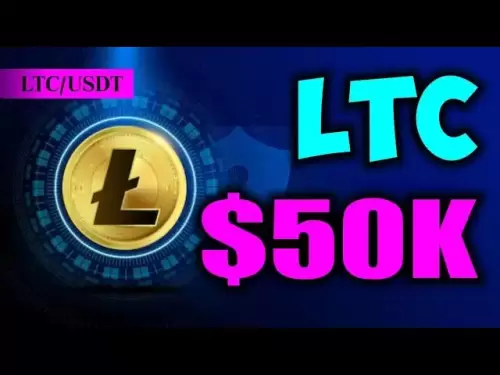-
 Bitcoin
Bitcoin $118100
0.44% -
 Ethereum
Ethereum $3765
5.84% -
 XRP
XRP $3.498
3.12% -
 Tether USDt
Tether USDt $1.000
0.00% -
 BNB
BNB $753.2
3.41% -
 Solana
Solana $181.7
3.58% -
 USDC
USDC $0.9999
0.01% -
 Dogecoin
Dogecoin $0.2704
12.75% -
 Cardano
Cardano $0.8684
5.85% -
 TRON
TRON $0.3151
-0.86% -
 Hyperliquid
Hyperliquid $46.06
4.51% -
 Stellar
Stellar $0.4695
2.48% -
 Sui
Sui $3.910
3.18% -
 Chainlink
Chainlink $19.36
6.65% -
 Hedera
Hedera $0.2750
3.99% -
 Bitcoin Cash
Bitcoin Cash $544.6
6.31% -
 Avalanche
Avalanche $25.12
3.69% -
 Shiba Inu
Shiba Inu $0.00001559
5.40% -
 Litecoin
Litecoin $116.8
5.10% -
 UNUS SED LEO
UNUS SED LEO $8.991
0.05% -
 Toncoin
Toncoin $3.283
2.79% -
 Polkadot
Polkadot $4.509
3.97% -
 Uniswap
Uniswap $10.67
6.58% -
 Ethena USDe
Ethena USDe $1.001
-0.01% -
 Monero
Monero $323.2
0.48% -
 Pepe
Pepe $0.00001410
6.37% -
 Bitget Token
Bitget Token $4.964
1.93% -
 Dai
Dai $0.9998
-0.01% -
 Aave
Aave $326.2
3.85% -
 Bittensor
Bittensor $421.8
2.46%
How does Chainlink connect smart contracts with real-world data?
Chainlink's decentralized oracle network enables smart contracts to access real-world data securely, enhancing their functionality across DeFi, insurance, and supply chain management.
Apr 02, 2025 at 03:56 pm

Chainlink is a decentralized oracle network that plays a crucial role in connecting smart contracts on blockchain platforms with real-world data. Smart contracts are self-executing contracts with the terms of the agreement directly written into code, but they can only interact with on-chain data. To access real-world data, such as stock prices, weather reports, or sports scores, smart contracts need to rely on external data sources, known as oracles. Chainlink acts as a bridge, providing a secure and reliable way to bring off-chain data onto the blockchain, enabling smart contracts to execute based on real-world events and conditions.
The Role of Oracles in Smart Contracts
Oracles are entities that fetch, verify, and deliver external data to smart contracts. Without oracles, smart contracts would be limited to the data available on the blockchain itself, severely restricting their potential applications. Chainlink's decentralized oracle network addresses the trust and security issues associated with centralized oracles. By using multiple independent data sources and nodes, Chainlink ensures the accuracy and reliability of the data provided to smart contracts. This decentralization minimizes the risk of data manipulation and enhances the overall security of the system.
How Chainlink Works
Chainlink operates through a network of nodes that are responsible for fetching and delivering data to smart contracts. Here's how the process works:
- Requesting Data: A smart contract on a blockchain platform, such as Ethereum, initiates a request for external data by calling a Chainlink oracle contract.
- Fetching Data: The oracle contract sends the request to multiple Chainlink nodes, which then fetch the required data from various external sources.
- Aggregating Data: The nodes aggregate the data they have collected and perform any necessary computations or validations.
- Reporting Data: Once the data is processed, the nodes report the results back to the oracle contract, which then relays the data to the smart contract that made the initial request.
This process ensures that the smart contract receives accurate and reliable data, enabling it to execute its terms based on real-world conditions.
Ensuring Data Accuracy and Security
One of the key challenges in using oracles is ensuring the accuracy and security of the data they provide. Chainlink addresses this through several mechanisms:
- Decentralization: By using a network of independent nodes, Chainlink reduces the risk of data manipulation. If a single node provides incorrect data, it can be identified and corrected by the consensus of the other nodes.
- Reputation System: Chainlink employs a reputation system for its nodes, rewarding those that consistently provide accurate data and penalizing those that do not. This incentivizes nodes to maintain high standards of data integrity.
- Data Aggregation: Chainlink nodes aggregate data from multiple sources, reducing the impact of any single source providing inaccurate information. This aggregation process helps to ensure that the data delivered to smart contracts is as accurate as possible.
Use Cases of Chainlink
Chainlink's ability to connect smart contracts with real-world data opens up a wide range of potential applications. Some of the most notable use cases include:
- Decentralized Finance (DeFi): Chainlink can provide real-time price feeds for cryptocurrencies and other assets, enabling DeFi platforms to offer services like lending, borrowing, and trading based on accurate market data.
- Insurance: Smart contracts can use Chainlink to access weather data, enabling the automatic payout of insurance claims based on predefined conditions, such as rainfall or temperature thresholds.
- Supply Chain Management: Chainlink can provide data on the location and status of goods in a supply chain, allowing smart contracts to automate processes like tracking, verification, and payment.
- Gaming and Betting: Chainlink can deliver real-time data on sports events, lottery results, or other outcomes, enabling smart contracts to execute payouts based on the results of these events.
Chainlink's Impact on the Blockchain Ecosystem
Chainlink's role in connecting smart contracts with real-world data has significant implications for the broader blockchain ecosystem. By enabling smart contracts to interact with off-chain data, Chainlink expands the potential applications of blockchain technology, making it more versatile and powerful. This has led to increased adoption of smart contracts across various industries, as businesses and developers recognize the value of automating processes based on real-world conditions.
Challenges and Future Developments
While Chainlink has made significant strides in connecting smart contracts with real-world data, there are still challenges to overcome. One of the main challenges is ensuring the scalability of the oracle network, as the demand for off-chain data continues to grow. Chainlink is addressing this through ongoing development and upgrades to its network, including the introduction of new features like Chainlink 2.0, which aims to enhance the scalability and efficiency of the oracle network.
Another area of focus for Chainlink is expanding its ecosystem of data providers and node operators. By increasing the number and diversity of data sources, Chainlink can provide more comprehensive and accurate data to smart contracts, further enhancing their capabilities. Additionally, Chainlink is exploring new use cases and applications, such as decentralized identity and cross-chain interoperability, to further expand the potential of smart contracts.
Chainlink's Role in the Future of Smart Contracts
As the demand for smart contracts continues to grow, Chainlink's role in connecting these contracts with real-world data will become increasingly important. By providing a secure and reliable way to access off-chain data, Chainlink enables smart contracts to automate a wide range of processes and applications, from financial transactions to supply chain management. This not only enhances the efficiency and transparency of these processes but also opens up new opportunities for innovation and growth within the blockchain ecosystem.
Common Questions Related to Chainlink and Smart Contracts
Q: What is Chainlink and how does it work with smart contracts?
A: Chainlink is a decentralized oracle network that connects smart contracts with real-world data. It works by allowing smart contracts to request data from external sources through a network of nodes, which fetch, aggregate, and deliver the data back to the smart contract. This enables smart contracts to execute based on real-world conditions and events.
Q: Why do smart contracts need oracles like Chainlink?
A: Smart contracts are limited to the data available on the blockchain itself. To access real-world data, such as stock prices or weather reports, smart contracts need oracles like Chainlink to fetch and deliver this data securely and reliably. This allows smart contracts to automate processes based on off-chain information.
Q: How does Chainlink ensure the accuracy and security of the data it provides?
A: Chainlink ensures data accuracy and security through decentralization, a reputation system for nodes, and data aggregation from multiple sources. By using a network of independent nodes and rewarding accurate data providers, Chainlink minimizes the risk of data manipulation and ensures the reliability of the data delivered to smart contracts.
Q: What are some common use cases for Chainlink in smart contracts?
A: Common use cases for Chainlink include decentralized finance (DeFi), insurance, supply chain management, and gaming and betting. Chainlink can provide real-time price feeds, weather data, location and status information, and event outcomes, enabling smart contracts to automate processes in these areas based on real-world data.
Q: What challenges does Chainlink face, and how is it addressing them?
A: One of the main challenges for Chainlink is ensuring the scalability of its oracle network as demand for off-chain data grows. Chainlink is addressing this through ongoing development and upgrades, such as Chainlink 2.0, which aims to enhance scalability and efficiency. Additionally, Chainlink is expanding its ecosystem of data providers and exploring new use cases to further enhance its capabilities.
Disclaimer:info@kdj.com
The information provided is not trading advice. kdj.com does not assume any responsibility for any investments made based on the information provided in this article. Cryptocurrencies are highly volatile and it is highly recommended that you invest with caution after thorough research!
If you believe that the content used on this website infringes your copyright, please contact us immediately (info@kdj.com) and we will delete it promptly.
- WLFI Token Trading: Community Approval and What It Means for You
- 2025-07-21 06:30:13
- Arctic Pablo: The Meme Coin Investment Opportunity Chasing Snow and ROI
- 2025-07-21 06:30:13
- Crypto & Institutions in July 2025: What's the Hype?
- 2025-07-21 04:30:12
- Pepeto, DOGE, SHIB Prices: What's Hot and What's Not in the Meme Coin Mania
- 2025-07-21 04:30:12
- Bitcoin Bulls Eye $125K Breakout: Is the Digital Gold Rush Back On?
- 2025-07-21 05:10:12
- Decrypting Crypto: Bitcoin's Real-World Utility and the Future of Finance
- 2025-07-21 05:15:12
Related knowledge

What is the difference between a sidechain and a Layer 2?
Jul 20,2025 at 11:35pm
Understanding the Concept of SidechainsA sidechain is a separate blockchain that runs parallel to the main blockchain, typically the mainnet of a cryp...

What is the Inter-Blockchain Communication Protocol (IBC)?
Jul 19,2025 at 10:43am
Understanding the Inter-Blockchain Communication Protocol (IBC)The Inter-Blockchain Communication Protocol (IBC) is a cross-chain communication protoc...

How does sharding improve scalability?
Jul 20,2025 at 01:21am
Understanding Sharding in BlockchainSharding is a database partitioning technique that is increasingly being adopted in blockchain technology to enhan...

What is the "crypto trilemma" of scalability, security, and decentralization?
Jul 19,2025 at 06:28pm
Understanding the Concept of the Crypto TrilemmaThe crypto trilemma refers to the challenge of simultaneously achieving scalability, security, and dec...

What is a cliff and vesting schedule in tokenomics?
Jul 20,2025 at 10:28am
What Does a Cliff Mean in Tokenomics?In tokenomics, a cliff refers to a specific period during which token holders are not allowed to access or transf...

Can I create my own cryptocurrency?
Jul 20,2025 at 11:49pm
Understanding the Basics of Creating a CryptocurrencyYes, you can create your own cryptocurrency, but it involves a combination of technical knowledge...

What is the difference between a sidechain and a Layer 2?
Jul 20,2025 at 11:35pm
Understanding the Concept of SidechainsA sidechain is a separate blockchain that runs parallel to the main blockchain, typically the mainnet of a cryp...

What is the Inter-Blockchain Communication Protocol (IBC)?
Jul 19,2025 at 10:43am
Understanding the Inter-Blockchain Communication Protocol (IBC)The Inter-Blockchain Communication Protocol (IBC) is a cross-chain communication protoc...

How does sharding improve scalability?
Jul 20,2025 at 01:21am
Understanding Sharding in BlockchainSharding is a database partitioning technique that is increasingly being adopted in blockchain technology to enhan...

What is the "crypto trilemma" of scalability, security, and decentralization?
Jul 19,2025 at 06:28pm
Understanding the Concept of the Crypto TrilemmaThe crypto trilemma refers to the challenge of simultaneously achieving scalability, security, and dec...

What is a cliff and vesting schedule in tokenomics?
Jul 20,2025 at 10:28am
What Does a Cliff Mean in Tokenomics?In tokenomics, a cliff refers to a specific period during which token holders are not allowed to access or transf...

Can I create my own cryptocurrency?
Jul 20,2025 at 11:49pm
Understanding the Basics of Creating a CryptocurrencyYes, you can create your own cryptocurrency, but it involves a combination of technical knowledge...
See all articles

























































































